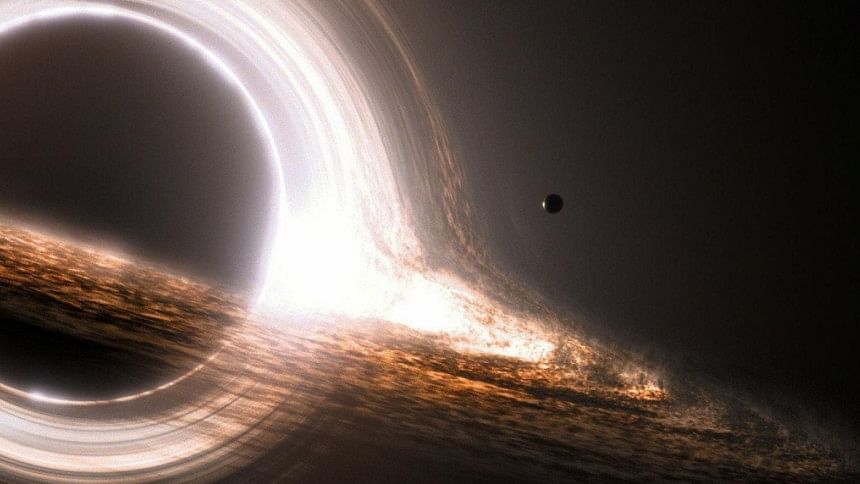Hubble Scope Telescope snaps the biggest black hole

A new photograph of galaxy NGC 4889 looks peaceful from such a great distance, but it's actually home to one of the biggest black holes that astronomers have ever identified, reports Yahoo Tech. Even though the galaxy located in the Coma Cluster about 300 million light-years away is currently classified as dormant, The supermassive black hole hidden away in NGC 4889 breaks all kinds of records.
The supermassive black hole is roughly 21 billion times the size of the Sun, and its event horizon, an area so dense and powerful that light can't escape its gravity, measures 130 billion kilometers in diameter, Yahoo Tech reports. That's about 15 times the diameter of Neptune's orbit around the Sun, according to scientists at the Hubble Space Telescope. At one point, the black hole was fueling itself on a process called hot accretion. Space stuff like gases, dust, and galactic debris fell towards the black hole and created an accretion disk. Then that spinning disk of space junk, accelerated by the strong gravitational pull of the largest known black hole, emitted huge jets of energy out into the galaxy.
During that active period, NGC 4889 would have classified as a quasar (quasi-stellar radio source). But the black hole is now in dormant mode because there isn't any more sustenance stored in the orbiting accretion disk. "The accretion disk sustained the supermassive black hole's appetite until the nearby supply of galactic material was exhausted. Now, napping quietly as it waits for its next celestial snack, the supermassive black hole is dormant", says the Hubble Space Telescope website.
It is impossible to observe a black hole directly, but scientists have been able to identify the implied presence of a black hole by analyzing the way celestial objects interact with some invisible force. For this particular black hole in the NGC 4889 galaxy, scientists used instruments on the Keck II Observatory and the Gemini North Telescope to measure the velocity of stars moving around the center point of the galaxy, says the report in Yahoo Tech. The stars' specific velocities are what allowed scientists to calculate the incredible size of NGC 4889's black hole.

 For all latest news, follow The Daily Star's Google News channel.
For all latest news, follow The Daily Star's Google News channel. 








Comments